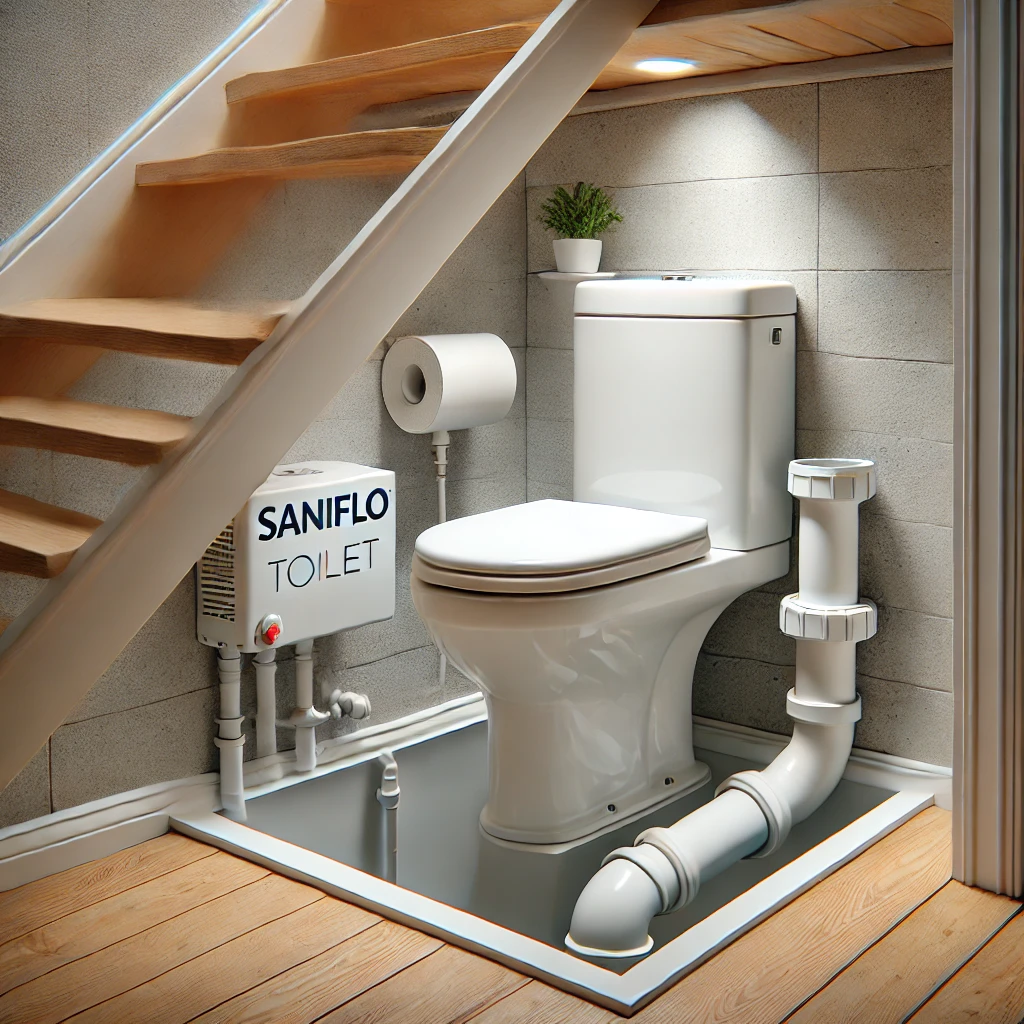Maximizing space in your home can be a challenge, especially when it comes to adding a bathroom in unconventional areas like under the stairs. Traditional plumbing systems may not always be feasible due to drainage limitations. This is where a Saniflo toilet with a water pump becomes the perfect solution. In this guide, we’ll explore how to install a Saniflo toilet under stairs, its benefits, and key considerations for a smooth setup.
Why Choose a Saniflo Toilet for Under Stairs Installation?
A Saniflo toilet is a macerating system designed to handle waste efficiently, even when traditional gravity-based drainage isn’t an option. Instead of relying on large-diameter pipes, a Saniflo unit grinds waste into a slurry and pumps it through a small-diameter pipe to the main drain line. This makes it ideal for installing a toilet in a location that lacks direct access to a conventional sewer line, such as under a staircase.
Benefits of a Saniflo Toilet Under Stairs
- Space-saving solution: Utilizes an underutilized area in your home.
- Cost-effective: Eliminates the need for extensive plumbing work.
- Flexible installation: Can be installed far from the main drain line.
- Quick setup: Requires minimal construction compared to traditional toilets.
Things to Consider Before Installation
Before you install a Saniflo toilet under stairs, there are several key factors to evaluate:
- Space Availability – Ensure the area under your stairs has enough height clearance and space for comfortable usage.
- Ventilation – Adequate airflow is necessary to prevent moisture buildup.
- Power Supply – Saniflo toilets require an electrical connection for the macerator and water pump to function.
- Drainage Route – Plan the path for wastewater disposal, ensuring it can connect to the main sewage line.
- Water Supply – Ensure a reliable connection to a water source for flushing.
Step-by-Step Guide to Installing a Saniflo Toilet Under Stairs
Step 1: Gather Tools and Materials
Before starting, you’ll need:
- A Saniflo macerating toilet system
- Water supply pipes
- PVC pipes for drainage
- A water pump (if additional pumping is required)
- Electrical connections
- Pipe sealant and tools (wrench, drill, saw)
Step 2: Position the Toilet
Place the Saniflo toilet in the desired location under the stairs. Ensure enough space for comfortable use and accessibility for maintenance.
Step 3: Connect the Macerator Unit
- Attach the macerator behind the toilet.
- Connect the small-diameter discharge pipe (typically ¾ to 1-inch) to carry waste to the main drainage system.
- Secure all pipe connections with pipe clamps and sealants.
Step 4: Install the Water Pump (If Required)
- If the waste needs to be pumped over a long distance or uphill, a water pump can assist the Saniflo unit.
- Connect the pump to the macerator’s outlet to help transport waste effectively.
Step 5: Connect to the Water Supply
- Attach the water supply line to the toilet’s inlet.
- Use a shut-off valve for maintenance purposes.
Step 6: Electrical Connections
- Plug the Saniflo macerator into a nearby electrical outlet.
- If using a water pump, ensure it’s properly connected to a power source.
Step 7: Test the System
- Flush the toilet to check for leaks.
- Listen for the macerator and water pump activation.
- Verify that wastewater is being pumped properly to the main drain.
Maintenance Tips for a Saniflo Toilet
To keep your Saniflo toilet running efficiently:
- Use Saniflo-approved cleaning products to prevent clogging.
- Avoid flushing non-biodegradable materials (wipes, sanitary products).
- Inspect the system regularly for leaks or unusual noises.
- Clean the macerator unit periodically to prevent buildup.
Final Thoughts
installing toilet under stairs under stairs is a practical way to add a bathroom in a small or unconventional space. With a water pump, the system can efficiently move waste even when traditional plumbing isn’t an option. By following the right steps and maintenance tips, you can enjoy a fully functional, space-saving bathroom without major renovations.













